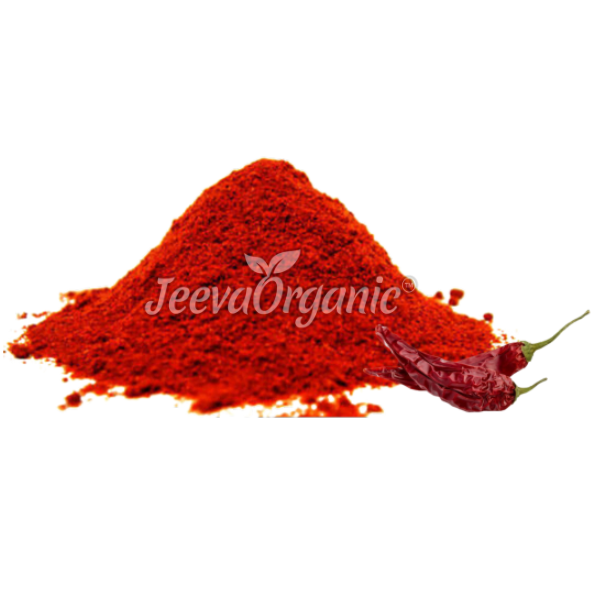Key Features:
Ingredient: Organic Chilli Powder (Capsicum annuum)
Form: Powder, suitable for diverse applications
Certification: USDA Organic, EU Organic, India Organic
SHU Rating: 100,000
Applications:
Food and Beverages: Enhance flavor profiles in sauces, seasonings, and spice blends
Cosmeceuticals: Investigate anti-inflammatory properties in skincare formulations
Scientific Name: Capsicum annuum
Common Name: Red Chilli, Red Pepper
Bioactive Components: Capsaicin, Carotenoids, Antioxidants
Cultivation: Sustainably sourced from certified organic farms
Harvesting: Hand-picked at peak ripeness
Jeeva Organics, a leading manufacturer and supplier, presents our premium Organic Chilli Powder, derived from certified organic red chilli peppers (Capsicum annuum) with a Scoville Heat Unit (SHU) rating of 100,000.



















